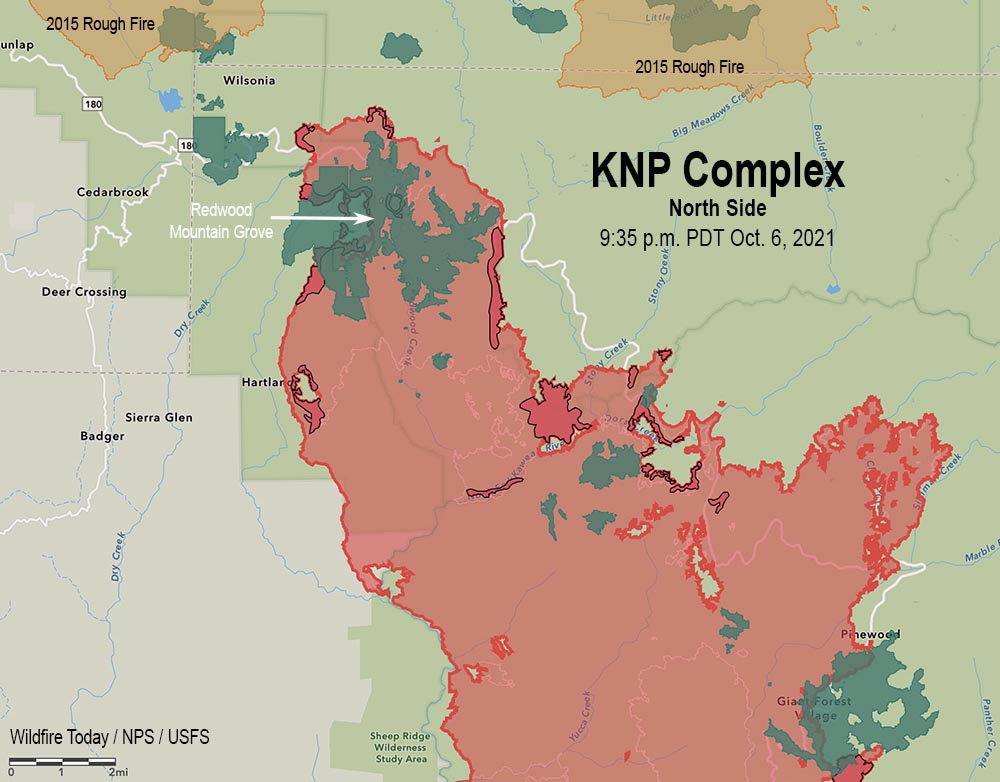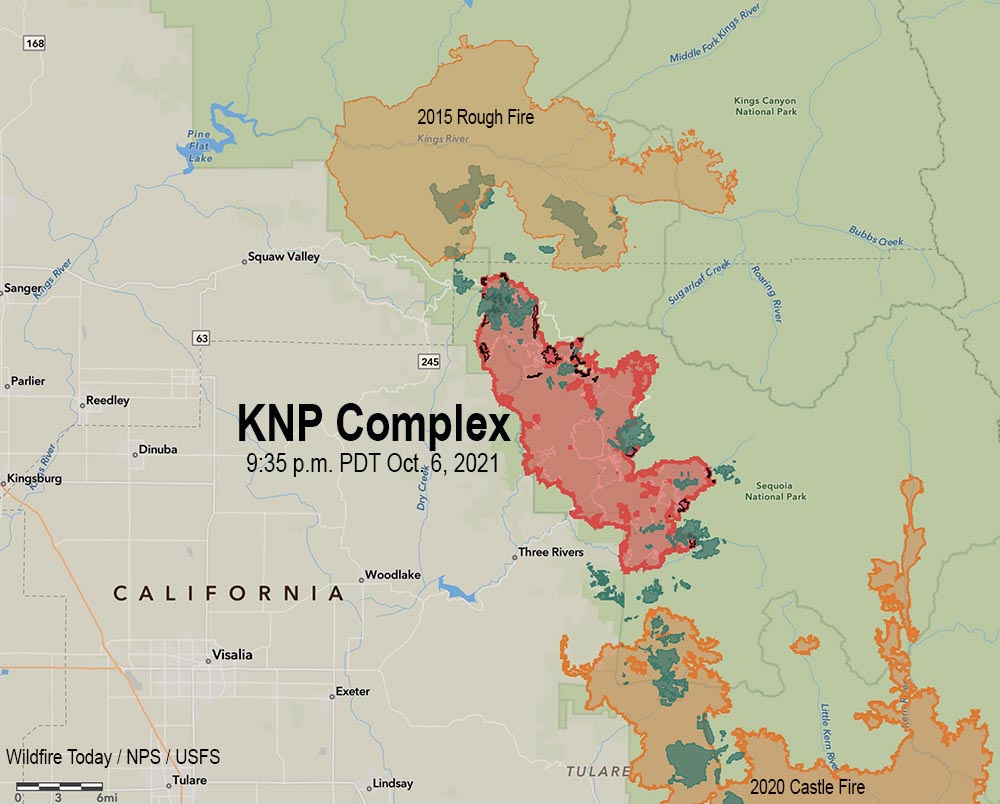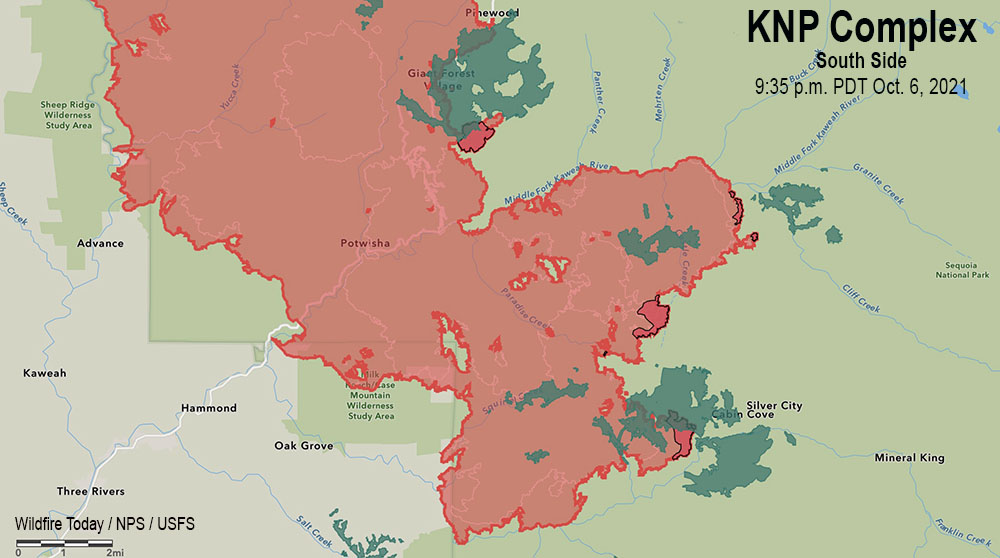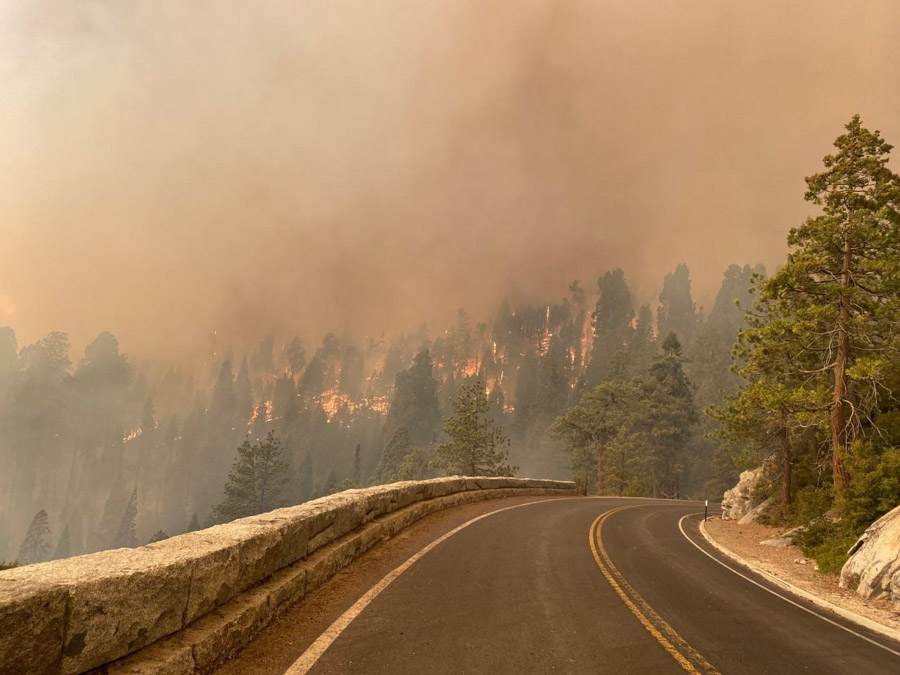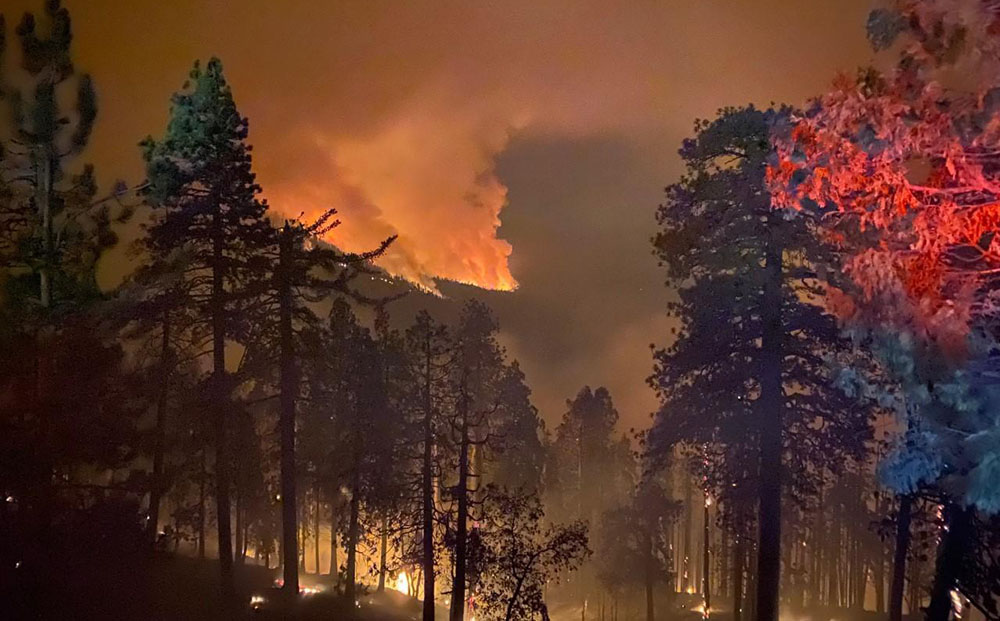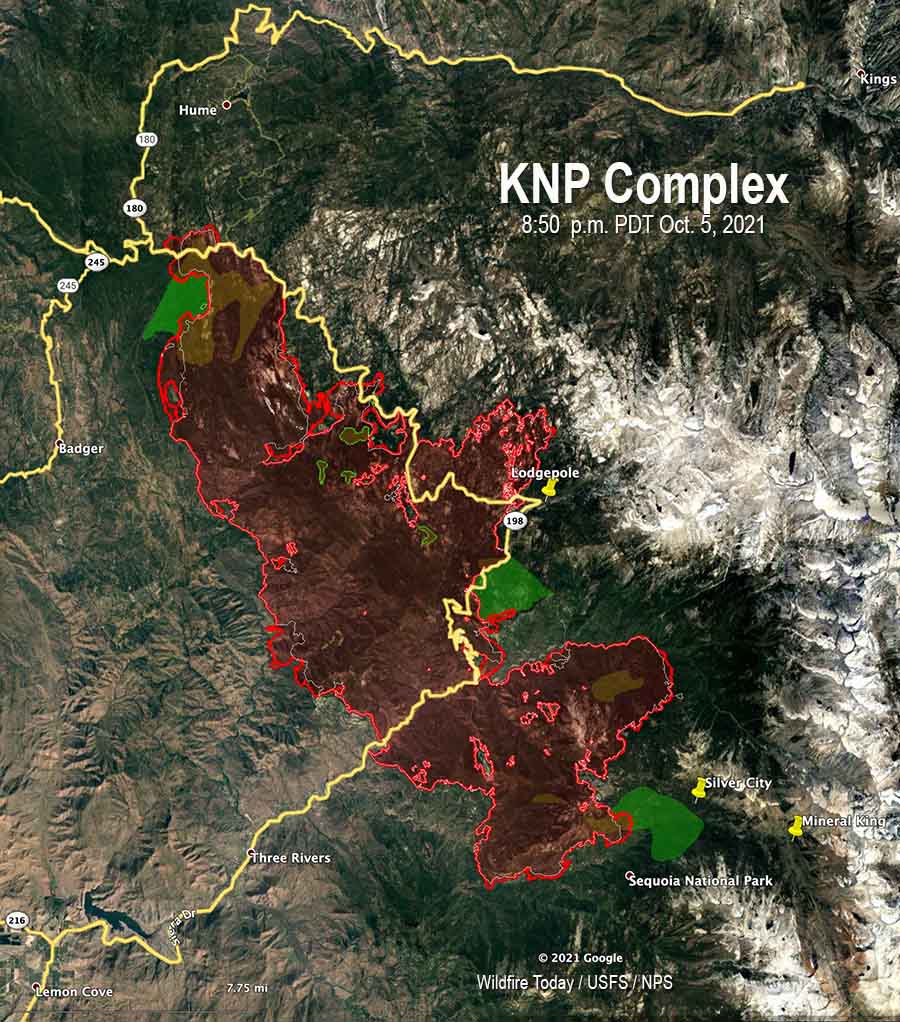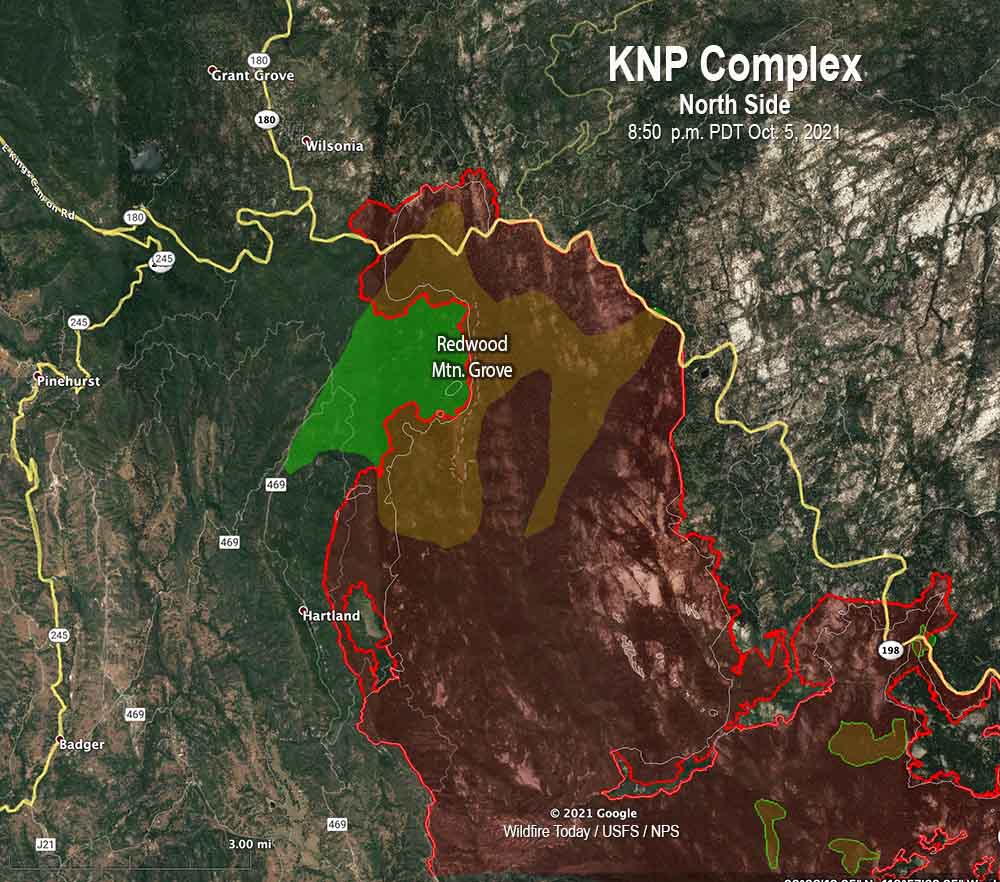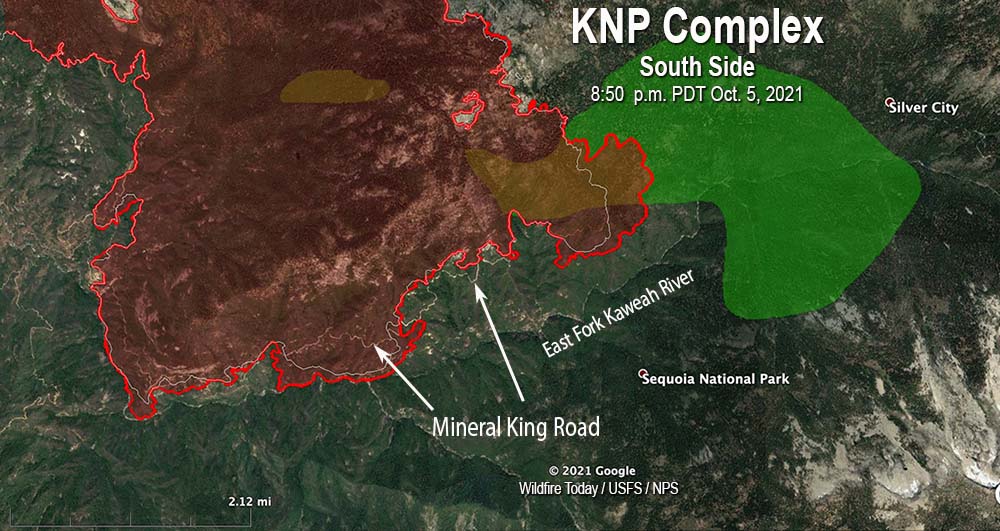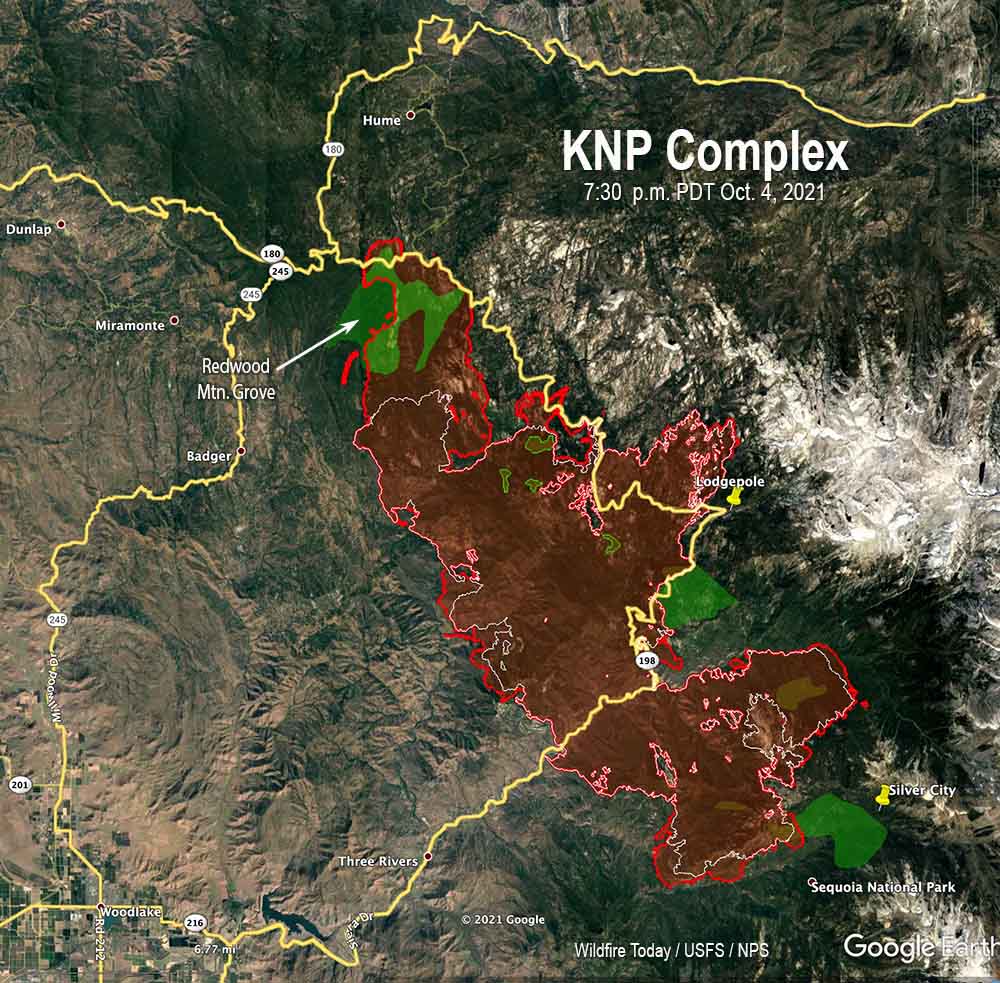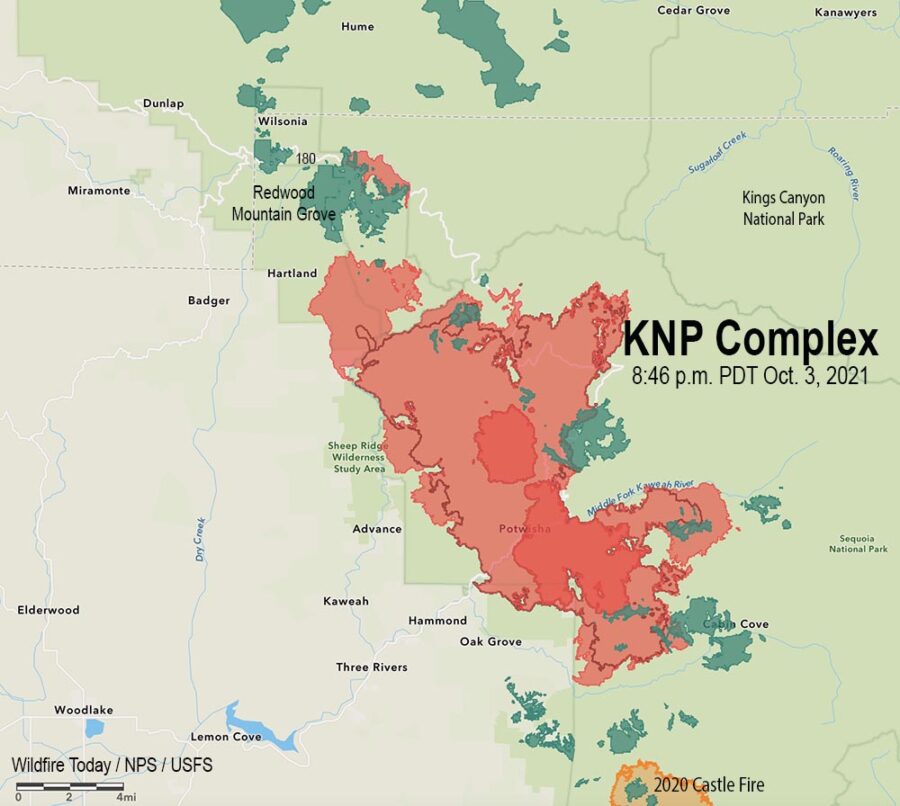
In 2020, 10 to 14 percent of the entire Sierra Nevada population of giant sequoia trees over 4 feet in diameter were killed in the Castle Fire. Early estimates expect that on two fires in 2021, the KNP Complex and the Windy Fire, 2,261 to 3,637 sequoias over four feet in diameter have already been killed or will die within the next three to five years. These losses make up an estimated additional 3-5% of the entire Sierra Nevada sequoia population over four feet in diameter.
In a two year period 13 to 19 percent of all giant sequoias in their natural range over four feet in diameter were killed or will die in the next few years.
These trees can live for up to 3,000 years. However, climate change, inadequate fuel management in the sequoia groves over previous decades, possible regeneration failure following the fires, and a shortage of firefighters while the blazes were burning have led to a significant threat to the persistence of the species.
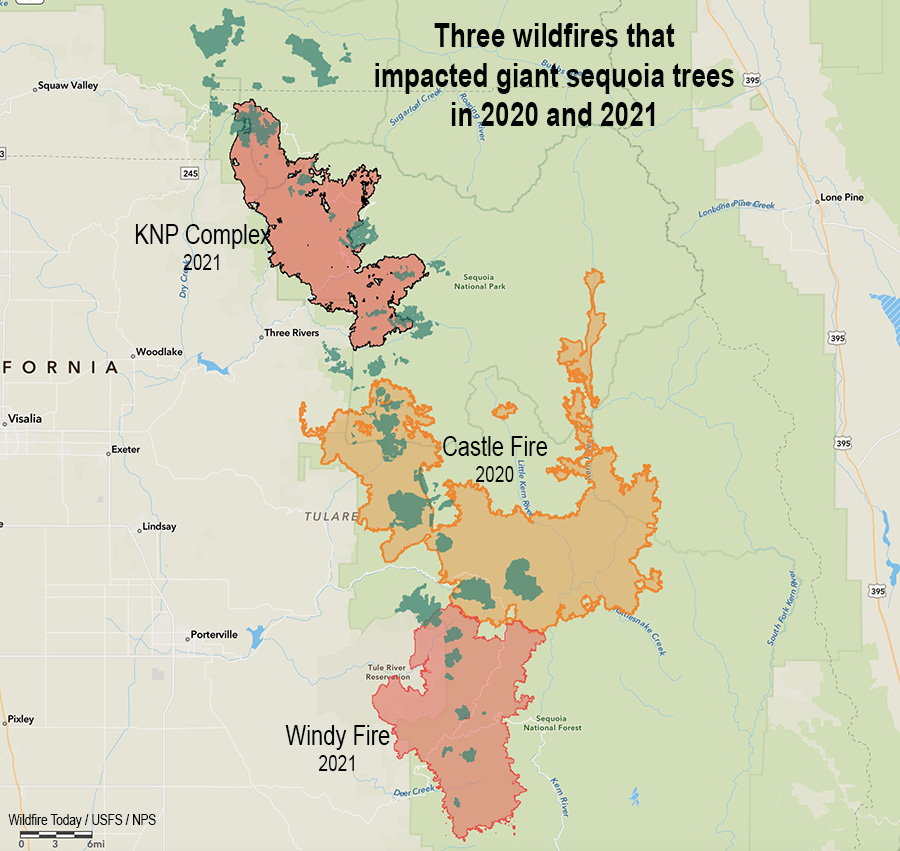
The burn severity in the 2021 fires was variable, from low severity which was beneficial, to high, which killed most of the trees and could make natural regeneration difficult or impossible. Areas that had been previously treated with prescribed fire or mechanical thinning reduced the mortality during the fires and allowed crews opportunities to safely fight fire more effectively.
Funds have been requested for the hundreds of acres, at least, that need to be replanted by hand.
Below is the “executive summary” of a report recently released about the effects of this year’s wildfires on the giant sequoia groves.
The 2021 fire season included two large wildfires (both started by the same lightning storm in early September) that burned into a large number of giant sequoia groves. This species has a limited distribution, covering just ~28,000 acres in ~70 groves on the western slopes of the Sierra Nevada mountains. Given the impacts of the 2020 Castle Fire to sequoia groves, where losses were estimated at 10-14% of the entire Sierra Nevada population of sequoia trees over 4 feet in diameter, there is significant concern by sequoia managers and the public regarding the impacts of these new fires. This report summarizes potential impacts to groves that were burned in the 2021 fire season, in the KNP Complex Fire and Windy Fire, including number of groves burned, amount of grove area burned at differing vegetation severity (RAVG-composite burn index), estimated number of large sequoias killed based on a preliminary analysis, the percentage of the entire population this loss represents, potential for regeneration failure, and potential for loss of seed source due to erosion (for KNP only). All of the data, data analysis, maps and modeling contained in this report are excerpted from the Burned Area Emergency Response Plan for the KNP Complex produced by an interagency team and submitted by the National Park Service. Some additional explanatory text and structure has been added to make this a standalone report. Because of this emphasis, there is more detail and analysis for KNP Complex sequoia groves than those burned in the Windy Fire.
Grove-level Estimates
- In total 27 sequoia groves are fully or partially within the fire perimeters of the KNP Complex Fire and the Windy Fire.
- 16 groves burned in the KNP Complex Fire.
- 11 groves burned in the Windy Fire.
- For both fires combined, 6,109 acres of giant sequoia groves were burned. This estimate is based on updated grove boundaries provided by the NPS and the USFS Region 5 Remote Sensing Laboratory.
- KNP: 4,374 acres
- Windy: at least 1,735 acres (Note: this estimate does not include two groves on the Tule River Reservation for which there is not publicly available spatial data)
Sequoia Grove Vegetation Burn Severity Analysis Using Composite Burn Index (CBI)
Fire severity was assessed using the USFS Rapid Assessment of Vegetation Condition after Wildfire (RAVG) four class Composite Burn Index product (CBI4) (details on the severity maps can be found on the RAVG website https://fsapps.nwcg.gov/ravg/). This analysis contains four categories of vegetation change: undetected change, low, moderate, and high, where high severity has been associated with 95% tree mortality (Miller et al., 2009). The acreage burned by severity class for each fire is:
KNP Complex (all ownerships):
- Undetected change: 1,169 acres
- Low: 1,849 acres
- Moderate: 740 acres
- High: 616 acres
Windy Fire (all ownerships):
- Undetected change: 228 acres
- Low: 659 acres
- Moderate: 437 acres
- High: 411 acres
Large Sequoia Mortality Estimates
For the KNP Complex we estimate that between 1,330-2,380 sequoias over four feet in diameter have already been killed or will die within the next three to five years. This estimate is based on RAVG satellite analysis combined with mortality rates from surveys in other sequoia groves that burned in three previous fires (similar methodology to Stephenson and Brigham 2021).
For the Windy Fire, we estimate that between 931-1,257 sequoias over four feet in diameter have already been killed or will die within the next three to five years.
The combined impact of these two fires is estimated to be 2,261-3,637 sequoias over four feet in diameter that have already been killed or will die within the next three to five years. These losses make up an estimated 3-5% of the entire Sierra Nevada sequoia population over four feet in diameter. On top of the 10-14% of large sequoias lost in the 2020 Castle fire, these fire impacts represent a significant threat to large sequoia persistence.

Potential for Regeneration Failure
The least understood impacts of these wildfires are impacts to sequoia regeneration in high severity areas. Sequoias generally regenerate well after wildfire, though reports of inadequate regeneration in high severity areas are raising concerns. Regeneration failures could potentially occur if the cones and/or seeds were incinerated during crown fire, seeds did not survive the smoldering fire, or seeds washed away due to surface erosion. In these cases, regeneration would be dependent on proximity to live tree seed sources.
For the KNP complex we analyzed high severity areas within sequoia groves that were over 100 meters from an intact sequoia grove area with live sequoia trees (represented by areas of undetected change, low or moderate severity). In total 436 acres were identified that may be vulnerable to total sequoia loss if regeneration from seeds that survived the fire is inadequate. Of the 436 acres >100m from live sequoia forests, 335 acres are on NPS lands. The Burned Area Rehabilitation Plan recommends reforesting these 350 acres with giant sequoias if adequate regeneration is not present based on subsequent field surveys.
Erosion modeling suggests that the high severity areas identified for potential restoration are also at high risk of losing any seeds that did survive the fire due to surface erosion.
Other Key Points
In several places that burned during this event, previous prescribed fire work appears to have reduced fire severity (portions of Redwood Mountain Grove, Giant Forest). In other areas previous prescribed fire and mechanical thinning treatments, as well as preparation for upcoming burn units, allowed fire crews opportunities to safely fight fire more effectively (prescribed burn preparations at Lost Grove and Park Ridge Fire Lookout area were used during suppression operations on the KNP complex).
Although we are seeing some significant high and moderate severity areas in sequoia groves where we expect impacts to large giant sequoias to be detrimental, much of the grove area in the KNP Complex burned at low severity and we expect beneficial results for giant sequoias in these areas. These beneficial effects include fuel reduction, small canopy openings ideal for regeneration, and removal of litter and generation of ash – also ideal conditions for giant sequoia seedlings.
Other areas not classified as high severity may have also had beneficial effects, but the effects will likely be more mixed. In areas classified as “undetected change,” there will likely be a mix of completely unburned areas and areas that had a light surface fire that is similar to low severity fire effects. The fire effects in moderate severity will be the most variable, with some areas having beneficial effects and others being more severe.
Thanks and a tip of the hat go out to Ben.

